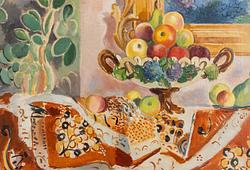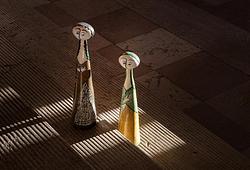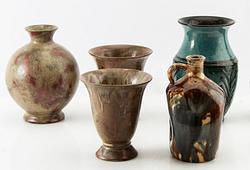A famille verte dish, Qing dynasty, Kangxi (1662-1722).
This shallow saucer dish with its raised sides is decorated in the famille verte palette with an array of objects. It includes a parrot on a chain in a holder hanging from a stand, various vases of archaic bronze form and a bronze figure of a kylin - all arranged on and amongst tables and stands. To the reverse of saucer are three double peony sprays in green and iron-red. Diameter 22,5 cm.
Restored.
Alkuperä - Provenienssi
The Avalon Collection.
This collection, which in the main focuses on the Interregnum and Kangxi periods has been both carefully and sensitively formed over the last twenty-five years. The collector, a member of the English Oriental Ceramic Society, has assembled the collection with an eye for provenance whilst purchasing from old European collections, well-established antique dealers and at auction.
Academically, the pieces have been well researched both in terms of their symbolism and narrative themes. In many instances the imagery on the pieces has been referenced to episodes in the romantic and historic novels of Chinese mythology, which were used extensively in the decoration of seventeenth century Chinese porcelain.
Muut tiedot
The decorative format referred to as the “Hundred Antiques” was thought suitable for a scholars collection at that time.
































